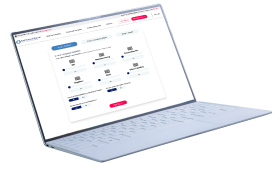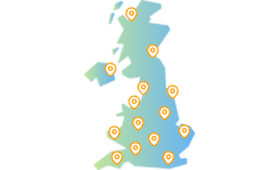
Understand your company's position and learn more about the options available
Require Immediate Support? Free Director Helpline: 0800 644 6080
Free Director Helpline: 0800 644 6080
Updated:
If you are considering placing your insolvent limited company into liquidation, you may be wondering, "how do I actually liquidate my company?" and what the process actually involves.
The good news is that the majority of the liquidation process will be handled by the appointed licensed insolvency practitioner who will assume responsibility for dealing with your outstanding creditors, selling any assets of the business, and bringing the affairs of the company to an orderly end.
There are some things you will need to do as director, however, in order to kickstart the liquidation process. Below is a step-by-step guide to Creditors' Voluntary Liquidation (CVL), the most common type of insolvent company liquidation.
Free 60 Second Test
For Ltd Company Directors
What are you looking to do?
Choose below:
As the name suggests, a Creditors' Voluntary Liquidation (CVL) is a director-initiated process which is entered into voluntarily by a company. In order for a company to place itself into voluntary liquidation, a majority of shareholders must agree to this course of action.
Directors will typically enlist the services of a licensed insolvency practitioner at this point in order to fully understand their options before deciding to go ahead with the liquidation.
“I completed the simple on line form, received the free guide by email immediately and then a call from Tom who was so very helpful. Highly recommend this service”
Pauline Whitehead
As you are voluntarily opting to place the company into liquidation, you have the power to choose who you would like to appoint as liquidator. A liquidator must be a licensed insolvency practitioner.
A meeting of your creditors will be called by the insolvency practitioner, which is typically held virtually. At this meeting your creditors will need to vote on your nomination of insolvency practitioner confirming that they are happy with your choice. In the vast majority of cases, this is agreed with no pushback from creditors and the insolvency practitioner's appointment will be confirmed at this virtual meeting.
Once the insolvency practitioner is appointed, the liquidation can begin in earnest. The insolvency practitioner will have a number of duties to carry out, including:
Mounting creditor pressure?
If your creditors are growing increasingly impatient, it is time to take action. Ignoring the situation is only likely to make it worse. Take the first step today by contacting Real Business Rescue for immediate help and advice.
The team are available now - 0800 644 6080
Get a Quote Find Your Nearest Office
As soon as your company enters liquidation, you no longer need to have any contact with your creditors. Any correspondence can be directed to the insolvency practitioner who will liaise with creditors on your behalf.
It is part of the insolvency practitioner's role to ensure creditors are repaid as far as possible as part of the liquidation process. This is done by liquidating all assets belonging to the company in order to raise money. Once assets have been identified and sold, the insolvency practitioner will look to distribute the funds raised from this process to the company's outstanding creditors.
Creditors are paid according to their 'ranking':
As CVLs involve the liquidation of an insolvent company, there will not be enough money to pay every creditor in full. Any debt of the company which remains outstanding after the liquidation will be written off (unless the director has provided a personal guarantee to secure any of the borrowing).
Once all the company's outstanding affairs have been dealt with, the only thing left to do is to have the company's name removed from the register held at Companies House. The liquidator will inform Companies House that the company should be struck off; this will happen following a period of two months.
At this point the company will cease to exist as a legal entity. Any remaining debts will be wiped off, and, so long as you have not been hit with a disqualification order, you will be free to set up another limited company. Be aware, there are restrictions on reusing a company name (or similar name) after liquidation, so ensure you speak to your insolvency practitioner about your future plans so you can be advised accordingly.
Need to speak to someone?
If your company is struggling with unmanageable debts, squeezed cash flow, or an uncertain future, you are far from alone. We speak to company directors just like you every single day, and we are here to give you the help and advice you need.
Call our team today on 0800 644 6080
If you're considering liquidation for your limited company, you should make it a priority to seek expert advice from a licensed insolvency practitioner as a matter of urgency. We can help you assess the situation and recommend the most appropriate course of action going forwards. Our extensive office network comprises 100 offices across the UK with a partner-led service offering immediate director advice and support.
Still unsure whether liquidation is right for your company? Don't worry, the experts at Real Business Rescue are here to help. Our licensed insolvency practitioners will take the time to understand the problems your company is facing before recommending the best course of action going forward based on your own unique circumstances.

Complete the below to get in touch
For Ltd Company Directors
What are you looking to do?
Choose below:
We provide free confidential advice with absolutely no obligation.
Our expert and non-judgemental team are ready to assist directors and stakeholders today.

Understand your company's position and learn more about the options available

Find your nearest office - we have more than 100 across the UK. Remote Video Meetings are also available.

Free, confidential, and trusted advice for company directors across the UK.